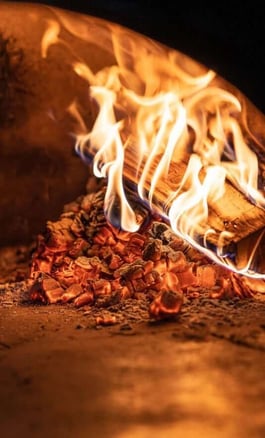New York Pizza: 3 Different Styles
People unfamiliar with New York assume there is a uniform type of New York pizza. Although all New York pizzas have a thin crust, a thin crust can mean a host of different things. At its unappetizing extremes, thin crust pizza ranges from being brittle like toast or doughy like a tortilla. Inevitably, the oven’s characteristics determine the pizza crust more than anything else.
A thin crust pizza can mix very different textures and personalities in way that a thick crust pizza cannot. For example, the corner New York pizza is on the doughy side and bendable enough to fold over, but never rubbery. In contrast, Neapolitan pizza, made in brick ovens, has unique mixture of crispness and flexibility. With all this variation and history, New Yorkers are lucky to be the home of the best thin crust pizza in the world.
A better way of looking at it is that New York style pizza is not one style, but three, all thin crust. Here is how you can notice the difference.
Crisp, Smoky Neapolitan-Inspired Pizza from Wood-Burning Ovens
Neapolitan pizza is always made in hot wood burning ovens. In minutes, they produce a pizza with both crispness and softness, often in the same bite. This is closely derived from the original pizza style from Naples where pizza was invented. Although not the predominant style, it has an under-appreciated longevity in NYC. New Yorkers have brought innovation to this style too, being much more adventurous with toppings. Even before California pizza, the American interpretation of Neapolitan pizza has found new specialty combinations (Bodrum has 20).
Neapolitan is optimal for experimentation, because along with its texture, it has a smoky taste that adds another element. A sign of this subtle flavor is the occasional char spots on the crust. Remember because it is immediately soft inside the bottom crust, this should not produce a burnt taste. This pizza is a bit thicker than styles founded in New York but is smaller in size. Sometimes, a hungry adult can consume an entire one.
Coal-Fire New York Style or New York / Neapolitan
In the early 20th century, the original pizza makers of New York City could not replicate the cooking process of pizza that they were familiar with from Naples. Pizza ovens in Naples were fueled by wood. In NYC, it did not make economic sense to use wood-fire ovens when the U.S. was rich with coal, which also produce exceptional heat like wood burning ovens. So the New York City pizza pioneers, like Lombardi and Grimaldi, made pizza in coal fire brick ovens. What resulted was an entirely new pizza and the grandfather of American pizza.
In fact, it is hard to find in NYC. And customers do not realize that original New York Style and the prevalent NY style are not the same. They look the same, but the crust the only places that make it this tend to be older establishments. This pizza is slightly thinner than its Neapolitan counterpart. You will find this pizza crack a little when folding it over and it is a tad crispier than Neapolitan. Many eat it with folding it. The pizzas are the same size as the “stereotypical” New York pizza.
Chewy New York Style with Modern gas ovens
The chewy New York pizza from gas ovens is a derivative on coal fired pizzas just as the Neapolitan inspired the coal fired New York pizza-makers. For most of us, our love affair with pizza started with chewy New York pizza. Huge pizza franchises have tried to replicate this standard banner. Yet, this style can get boring upon entering adulthood.
This pizza frequently sags at the tip when folded over. This is because New York style has a chewy core (often with a lot of grease) and a crisp crust (almost like a breadstick) that are radically different. This is the kind of pizza where you see the occasional person not eat the crust.
We’d like to hear your opinion about New York pizza and the interaction between Neapolitan culture and the food of New York immigrants.






